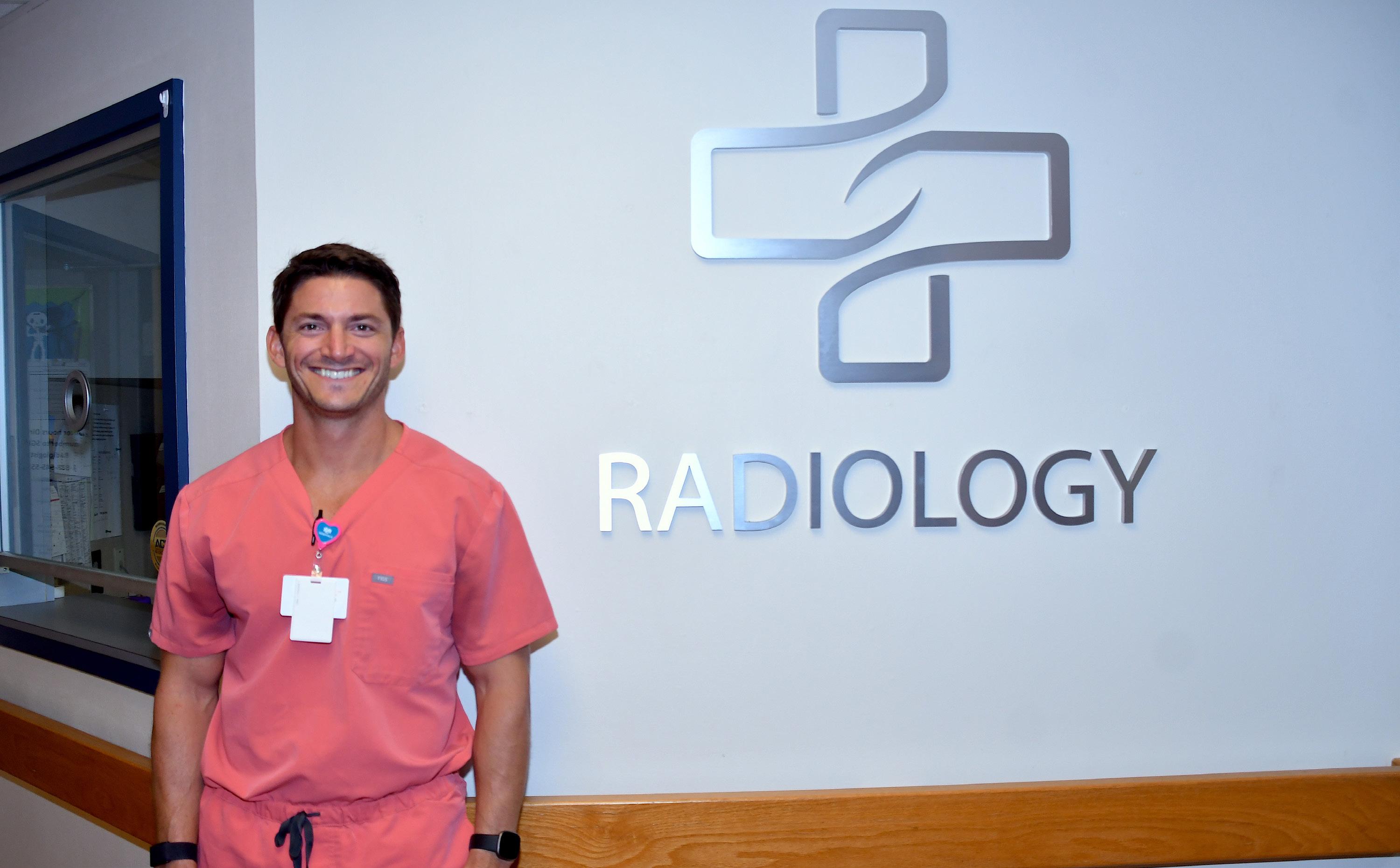

“No one wants to hear that you have cancer”
Belinda Powell’s success story
BY ETHAN REDDISH Managing EditorAs women get older, regularly scheduled mammograms are highly recommended to detect the onset of breast cancer. However, regular mammograms should not be the extent of preventative measures, with regular self-examination also recommended in between appointments. Even something as slight as an itch or a bump is worth investigating, as it could save your life; it certainly did for Belinda Powell.

According to Powell, one morning in August of 2015, she happened to discover a lump in her breast. “I say the good Lord put my hand there that morning,” she said. She scheduled a doctor’s appointment but was not very panicked at first. “Then, as the day progressed, I went to work, and I kept thinking,’ Oh my God, I’ve got breast cancer,’” she continued. Powell was able to get a mammogram that same day, which showed that the mass was potentially cancerous.
Fortunately, she was able to begin treatment fairly quickly and would go on to have multiple surgeries, as well as chemotherapy and radiation therapy. While the radiation was done in Thomasville, the rest was done in Bainbridge, either at Memorial Hospital or
the Archbold Specialty Clinic. She was especially pleased with the care she received at Memorial Hospital during this time. “They went to the radiologist at that time, and they sent me straight over to her office to tell me it was suspicious of cancer,” she said. “They were so good to me, I can’t say enough. I received amazing treatment.”

Of all the doctors and specialists she saw during her fight against cancer, there was one in particular that Powell was especially thankful for. Dr. Charles Walker, general surgeon at Memorial, was responsible for most of Powell’s surgical procedures during this time. “When I say Dr. Walker got me in there, he got me in there… when I went to see him, I was in surgery that same week; he was removing the lump.” Walker would also remove some of her lymph nodes and install and remove the port for her chemotherapy treatment.
“It was tough,” she said. “No one wants to hear that you have cancer, no one wants to hear that, and when you’re told that, it’s almost like the death sentence.” She recalled getting the news from Dr. Walker with her family present. “My mama, daddy, husband, and daughter were all there. And he didn’t just treat me, he treated my family because when you’re going through some-
thing like that, it affects your whole family… he was so good to us.” She continued, “I give all my healing to my God, I do, but I think Dr. Walker was a godsend when I started going through all this,” later adding, “I know he has umpteen-dozen patients, but he makes you feel like you’re the only one.” During her fight, Powell’s family and friends continuously prayed for her, and one Bible verse that she says comforted her during this time was Jeremiah 29:11, which reads, “‘For I know the plans I have for you,’ declares the Lord, ‘plans to prosper you and not to harm you, plans to give you hope and a future.’”
While the road wasn’t always easy, this verse held true. From first discovering the tumor through treatment, it took Powell a year and a half to be declared cancer-free, with chemo treatments every two weeks for 16 weeks.
“After that, I went every three weeks, for a total of a year and a half, because I had to do a drug called Herceptin,” she said. Herceptin is a drug designed to treat various cancers, including HER2+ breast cancer, which Powell had. Hers was particularly aggressive, having no sign at her previous mammogram just months prior. As part of her chemotherapy, she was put on Adriamycin, also referred to as the “red devil,” both for its
red color and unpleasant side effects, which can include fatigue, hair loss, and increased risk of infection, to name a few.
Despite the discomfort and struggle with the treatments, Powell persevered through.
“Once I got through those first treatments, you know, I could see some light at the end of the tunnel,” she said, “with every day I got to feeling better.”
While there are support groups available for patients and survivors, the best form of support during this, Powell said, “is taking to somebody that has been through it, or is going through it.” She added, “If you’ve nev-

er been through it, you don’t know. I know what people say… but no, you can’t compare it.”
Even after being declared cancer-free, Powell still has regular check-ups, seeing at least one of her doctors every six months. For women approaching their late thirties or early forties, she encouraged them not to put it off and start regular exams. “Definitely get your yearly check-ups and do self-breast exams. I didn’t; I just happened to find that. At 43, nobody thinks they’re going to have cancer at 43,” she said.
In addition to advising other women, Powell again praised the care she received at Memo-
rial Hospital. “I will tell anybody, I had the best experience ever… those people out there that treated me were a godsend.”
Not every cancer story, be it breast cancer or otherwise, always has a happy ending, and as Powell said, for some, it is a death sentence. But for many, it isn’t. The road to remission and recovery isn’t easy, but with modern medicine, good doctors, and the support of family and friends, it can be reached, and Belinda Powell’s story is a testament to that.






Offering quality care and the latest in cancer detection

When dealing with any illness or ailment, it’s natural to want the best treatment method. When it comes to something as serious as cancer, where early detection is paramount, the best detection method is just as important as treatment. Aside from self-examination, regular mammograms are also recommended; in that regard, Memorial Hospital and Manor offer the latest breast cancer detection.
Acquired toward the end of 2020, the Hologic Selenia Dimensions 3D Mammography machine allows the hospital radiology department to have a more detailed insight into the patient’s body. Unlike a traditional mammogram, which consists of a flat 2D image, a 3D mammogram, as the name implies, creates a 3D image of the patient’s breast.

Dr. Charles Brown, head of radiology at Memorial, explained how the machine does this. “You basically take 14 X-rays all at once,” he said. The computer then takes these 14 images from different angles and combines them into a composite, three-dimensional image. This procedure has a higher cancer detection rate than standard mammograms and reduces the unnecessary follow-up X-rays a patient may be asked to have.
According to Brown, the machine proved its utility and superiority over previous machines right away. “The first week we had the 3D machine in practice, I found a cancer you couldn’t find with a 2D mammogram,” he said. He explained how these sorts of distortions can obscure tumors from view, saying, “When the tissue’s dense, or the tissue has a certain look, on a 2D mammogram, the tissue itself can kind of obscure what you’re trying to see. And in a 3D mammogram, you can kind of see between the tissue.”
In addition to 3D mammograms, the hospital also offers breast MRIs. An MRI is more sensitive and uses a specific breast coil for breast imaging. However, while standard mammograms are often covered by insurance as preventative medicine, the MRI procedure can be cost-prohibitive, nor are they recommended for average check-ups. “It’s not approved for screening the average-risk patient,” Dr. Brown added, “but anyone’s that considered high risk or has something else going on, breast MRIs are the best way to image.”
Memorial performs numerous mammograms yearly; as of August of this year, over 1,000 have been performed, with a total of 1,700 having been done last year. For all the women relying on Dr. Brown and the radiology department they can be as-


sured they are receiving the best care a hospital can provide. In addition to the machines and procedures offered, while Brown is a general radiologist, he had a year of subspecialty training in breast imaging at the University of New Mexico.

Brown explained that one of the key differences between a mammogram and a standard X-ray procedure is the energy intensity used in each process.
“Typical X-rays are mostly looking at bones,” he explained, “so we shoot a high-energy X-ray, but for a mammogram, we’re basically X-raying soft tissues, basically fat and what we call fibro glandular tissue, and so the en-
ergy is much lower.” This lower energy provides a higher contrast in the final image.


Dr. Brown concluded by encouraging women over 40 to get a mammogram yearly. “We do great work from an imaging standpoint, from a breast cancer standpoint… I don’t think there’s anywhere better to get a mammogram.”






Ashley Wimberly’s road to recovery “I know I’m going to be okay”
BY SUMMER CONFER Contributing ReporterAshley Wimberly found a lump in her left breast during a self-examination in August of 2022. The 36-yearold Bainbridge resident immediately made an appointment with her local OBGYN and spent the next 12 days in a whirlwind of doctor visits, tests, and agonizing worry.
“A year ago, I never would have thought I could do all the things I have done in the past 12 months,” she said.
Wimberly received a phone call on the 12th day confirming a biopsy as cancerous. The biopsy revealed stage 3 invasive ductal carcinoma (IDC) in her left breast, spreading to a lymph node. She was found to test positive for the BRCA2 gene mutation, which is hereditary. About 50% of women with a BRCA1 or BRCA2 gene mutation will get breast cancer by the time they turn 70 years old, according to the Centers for Disease Control (CDC).
“I didn’t know what to do or say after that phone call. I was in shock and very scared,” she said.
Wimberly had a bilateral mastectomy at Emory University Hospital in December of 2022. A bilateral mastectomy is the surgical removal of both breasts to treat or prevent breast cancer, according to the Moffitt Cancer Center. She endured multiple surgeries, chemotherapy, radiation treatment and a risk-reducing hysterectomy since the operation in December.
“I am so thankful for all of my doctors in Bainbridge for acting so quickly to help me schedule appointments,” she said. “They helped me understand where I needed to go and what I needed to do every step of the way.”

When confronted with the possibility of losing her hair during treatment, Winberly took the matter into her own hands and shaved her head a
week before her chemotherapy began in March 2023.
“I was afraid of losing my hair, but I wanted to decide when and how it happened,” she stated. “Shaving all of my hair was one way I could decide what was happening to me.”
Not wanting her to face these hardships alone, her husband, Clay Wimberly, and a family friend also shaved their heads in support.

Wimberly fought through multiple recovery periods, stretches of daily appointments, and “unimaginable” fatigue during treatment. Wimberly received support from her husband, her mother-in-law, Dorothy, her mom, Hope, and her Nanny during her battle with breast cancer.

“I don’t know what I would have done if they hadn’t been here to help me,” Wimberly said.
Wimberly’s family assisted her with personal needs, as well as the daily chores around the house. She has three children, Brook, 19, Alyssa, 15, and Jacob, 8. Brooke moved home from college to help her mother and fill in for her younger siblings. Alyssa and Jacob have taken on more responsibilities at home. Ashley said one of the most complex parts of this journey had nothing to do with surgeries or treatments. “Jacob asks me often, ‘Is it gone, Mom?’” She said,”My whole family has had to adjust, but they have all done what needs to be done with no complaints,” Wimberly said.
Wimberly is considered to be cancer-free today, but she still has a long road to recovery. She will begin port infusions and have eventual port removal surgery, a CT scan and breast reconstruction surgery next February.
“Although I know the cancer could come back, I have faith in God, and I am hopeful,” she said. “I know I’m going to be okay.”

Breast cancer affects more than 350,000 new women annually, and the American Cancer Society (ACS) predicts more than 9,400 women in Georgia will be diagnosed with the disease in 2023.

Breast cancer is a disease in which specific cells in the breast grow uncontrollably, creating lumps known as tumors. In some cases, the growth can spread and develop tumors in other parts of the body. When the growth spreads, it is known as malignant Cancer and can be dangerous, even fatal.
“It’s important to understand that most breast lumps are benign and not cancer (malignant),” according to the ACS website, Cancer.org. “Non-cancer breast tumors are abnormal growths but do not spread outside the breast. They are not life-threatening, but some types of benign breast
The Breast Cancer Basics
lumps can increase a woman’s risk of getting breast cancer.”
To understand breast cancer, one needs to understand what Cancer is.
According to the National Institute of Health (NIH), Cancer is a disease in which some of the body’s cells grow uncontrollably and spread to other parts of the body.
The human body is made up of trillions of cells, and every day, it replaces hundreds of billions of them, according to “Cell Biology by the Numbers,” a textbook written by Ron Milo and Rob Phillips.
The body does this by sending a signal to the cells to start reproducing and another that tells them to stop. When someone has Cancer, a certain type of cell in their body stops listening to those signals.
Breast cancer is when one of the cell types in the breast stops listening to the signals and starts growing uncontrollably.
According to the ACS, the most
350,000
common cells to turn cancerous are cells in parts of the breast called lobules and ducts. Lobules are the glands in the breast that make breast milk, and cancers that start here are called lobular cancers.
Ducts are small canals that come out from the lobules and carry the milk through the breast. This is the most common place for breast cancer to start, and cancers that start here are called ductal cancers.
Breast cancers can also be classified into two distinctions: In situ and invasive. According to the ACS, these distinctions refer to whether the Cancer has spread or not.
In situ, breast cancer is Cancer that has not spread to the rest of the breast tissue. Invasive, also known as infiltrating, breast cancer is any form of breast cancer that has spread to the surrounding breast tissue.
According to the ACS, the median age at the time of breast cancer diagnosis is 62. Most women are above the
age of 45 when diagnosed, but diagnoses are possible at a younger age. Breast cancer can be hereditary. The genes most commonly affected in hereditary breast cancer are the breast cancer 1 (BRCA1) and breast cancer 2 (BRCA2) genes, according to the Centers for Disease Control (CDC). More than 2% of breast cancers — about 7,500 women annually — result from inherited mutations in the BRCA1 and BRCA2 genes. There isn’t a complete breast cancer prevention method known, but researchers are studying the effects hormonal medicines have on reducing breast cancer risk for women who are classified as high risk, according to the SCA. They also stated that “studies continue to look at whether certain levels of physical activity, losing weight, or eating certain foods, groups of foods, or types of diets might help lower breast cancer risk.”
9,400

New women will be diagnosed every year
georgia women will be diagnosed in 2023


